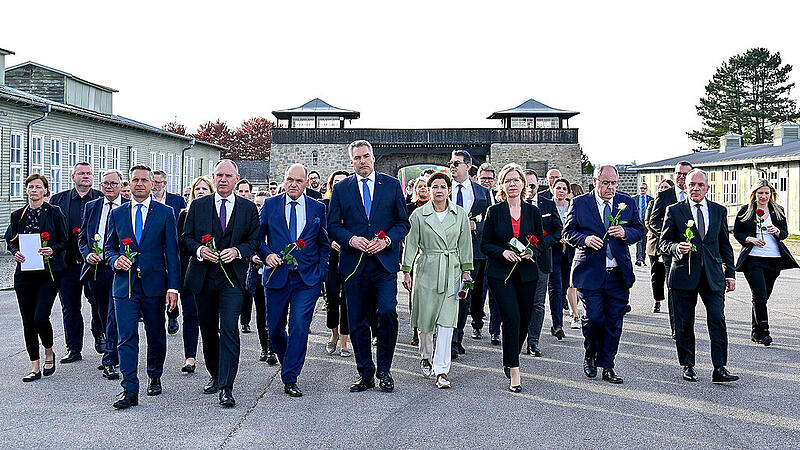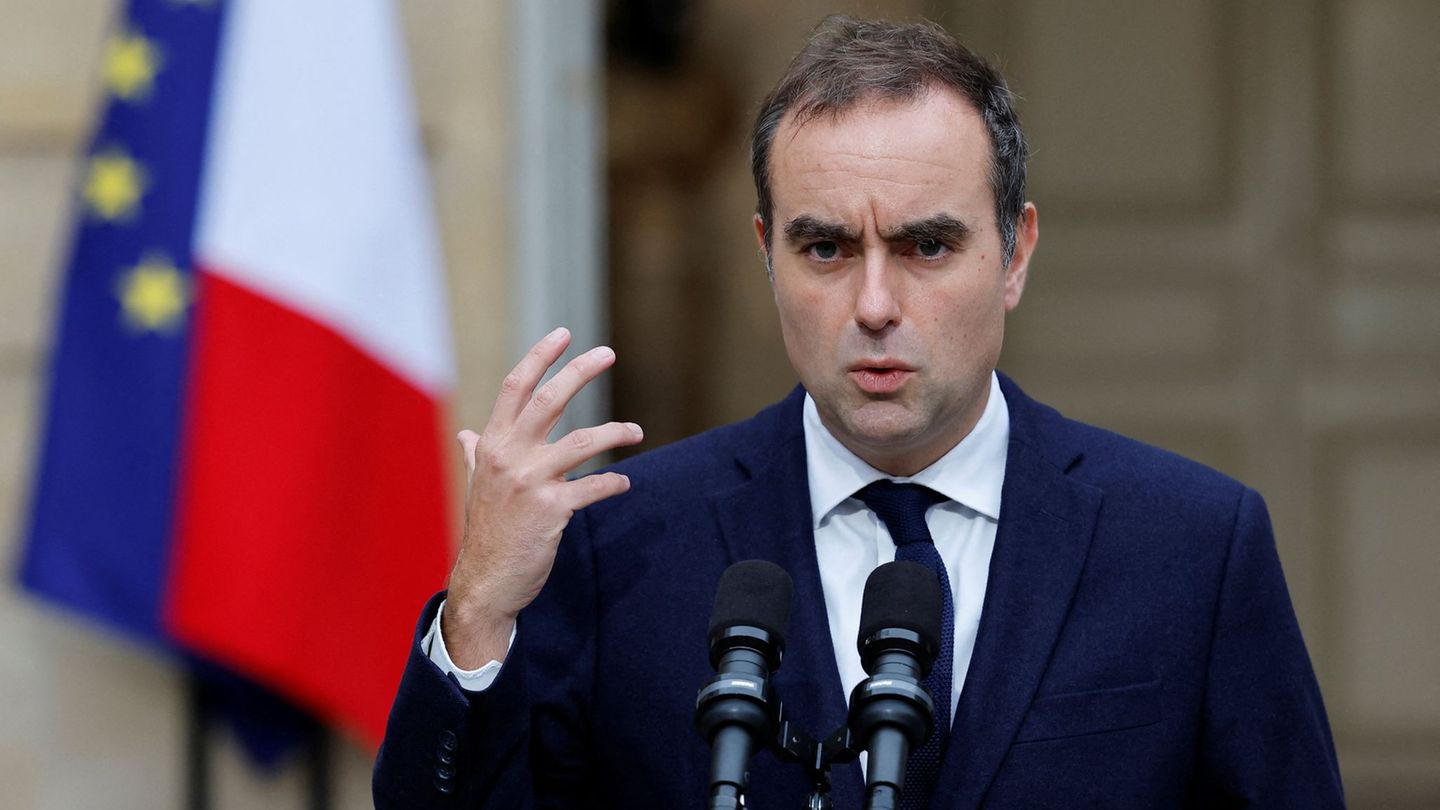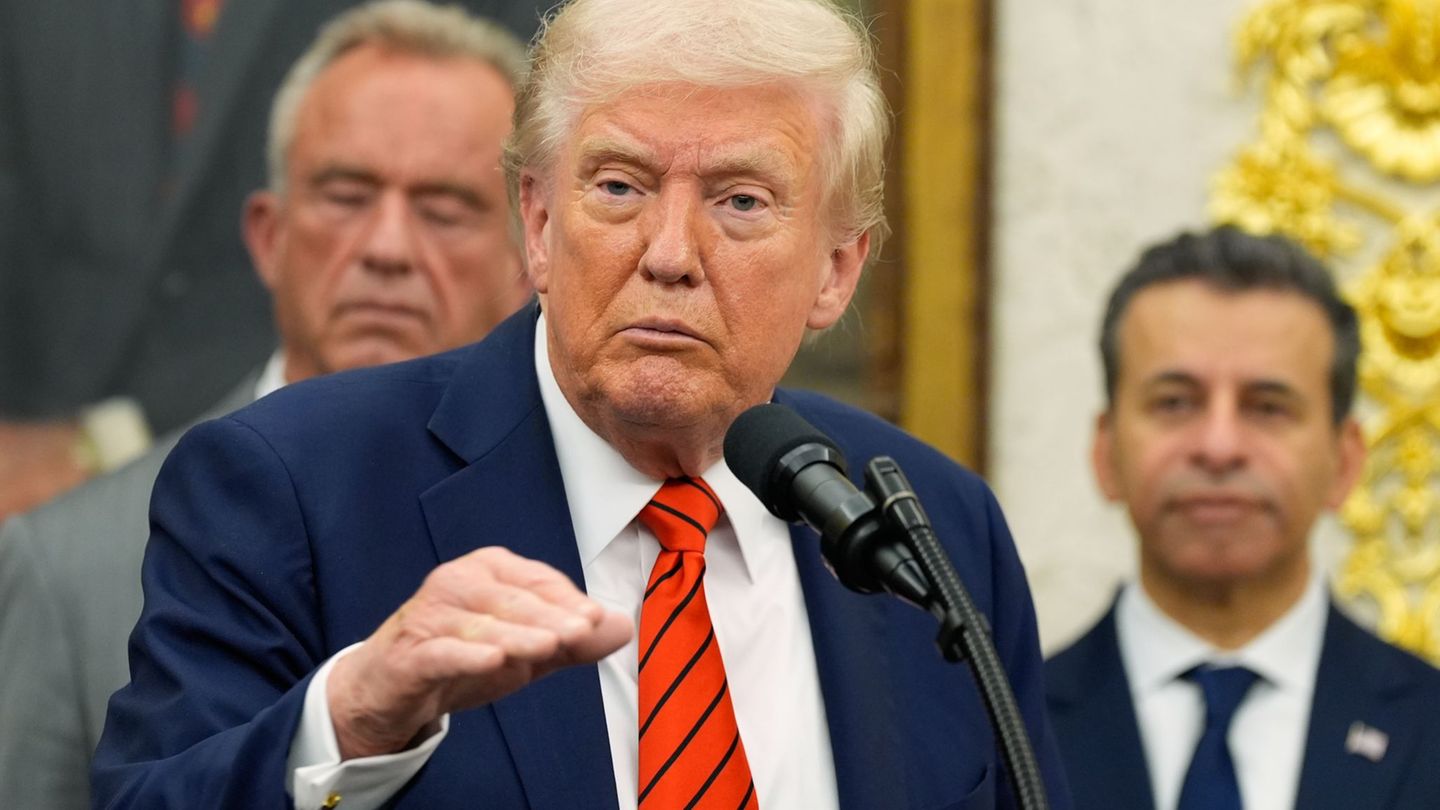Photo: (FOTOKERSCHI/SIMON BRANDSTATTER)

Photo: (FOTOKERSCHI/SIMON BRANDSTATTER)

Photo: (FOTOKERSCHI/SIMON BRANDSTATTER)
In terms of content, the celebration was marked by the currently ongoing participation process for the expansion of the Gusen concentration camp memorial site, after Austria bought areas of the former camp last year.
90,000 people died in Gusen
Between 1938 and 1945, around 190,000 people were imprisoned in the Mauthausen concentration camp and its more than 40 subcamps, around 90,000 did not survive. Officially, Gusen was only a subsidiary camp, but for many years the number of dead there was much higher than in the main camp. Today it is assumed that 71,000 prisoners from all over Europe were interned in Gusen, of whom around 36,000 died. The prisoners had to pay an enormous price in blood to construct an underground tunnel system in which the Nazis operated secret armaments production under the code name “Bergkristall”. Many prisoners were so weak that they died weeks after the US Army liberated them on May 5, 1945.
Republic acquired land
While the center of the former Mauthausen main camp was handed over to the Republic of Austria in 1947 with the condition that a memorial be erected, Gusen was increasingly forgotten. There was only a small memorial, which had repeatedly caused discussions recently. Above all, Poland – homeland of many victims – put pressure on for a more dignified commemoration and even wanted to buy the area itself. In the previous year, the Republic of Austria acquired some areas and remains of buildings, including the former roll call area, the gravel crusher and two SS administration buildings. In the coming years they are to be integrated into the existing Gusen Memorial.
As in the previous year, official Austria commemorated the victims of Gusen on Thursday evening – after a non-public ceremony in the Mauthausen concentration camp memorial – on the former roll call area. President of the National Council Wolfgang Sobotka, Chancellor Karl Nehammer (both ÖVP), several black and green members of the federal government as well as mandates from SPÖ and NEOS represented the Republic of Austria. Ambassadors from the victim nations were also present.

Photo: (FOTOKERSCHI/SIMON BRANDSTATTER)
Around 100 people from 20 nations are currently involved in the participatory process for the redesign of the memorial in Gusen, explained the director of the Mauthausen memorial, Barabara Glück. Instead of big speeches, this year there was a look ahead – several of those involved in the process outlined the framework of values on which the memorial should be based, from internationality to tolerance and dignity to appreciation and encounters. According to Glück, it should become a “place of international understanding and national responsibility”.
“Place of Remembrance and Encounter”
“Anti-Semitism, racism, totalitarianism, dictatorship, abolition of freedom of speech and abolition of democracy lead to what we see here,” Nehammer said. He wished the project all the best and promised “the support of the federal government is assured.” Karner had previously emphasized in a broadcast that “the ongoing redesign of the Gusen Memorial should enable a place of remembrance and encounter for the next generations”.
“There was indescribable chaos”
Guest of honor was the Gusen survivor Stanislaw Zalewski (97), who was imprisoned here for 545 days. He had been in the resistance in the Warsaw ghetto and was first taken to Auschwitz, then to Gusen, where he had to work in the quarry and in the tunnel system. On May 2, 1945, the guards fled, the so-called Volkssturm took over the watchtowers, Kapos were lynched, he said in an interview with APA. “There was indescribable chaos.” After the liberation by the Americans on May 5, 1945, he was admitted to the US Army. He finally walked home to Warsaw, for 78 days.
“Resistant Against the Winds of History”
How does he assess the handling of the former concentration camp area, some of which houses today? He is not a judge, he says, but when he came back here with his son – for the first time – 38 years after the liberation, she said: “Where is the tunnel?”. Anyone who comes to a memorial should feel as if they were an inmate after a certain amount of time, he explained in a press conference in Vienna on Thursday. Therefore, the infrastructure should remain as it was when the camp was in operation, and research should be carried out on site. His wish for Gusen: It should be “resistant to the winds of history”.

Photo: (FOTOKERSCHI/SIMON BRANDSTATTER)
After the celebration, the light and sound installation #eachnamematters in cooperation with Ars Electronica in the entrance area of the tunnel system – the Republic has also acquired areas here – commemorated the victims. The names of tens of thousands of concentration camp victims are projected across the board and read out at the same time. The commemoration ceremony in Gusen will be followed in the coming days by numerous other celebrations of the liberation of Austria from the Nazi regime of terror: delegations from all over the world are expected to attend the traditional liberation ceremony in Mauthausen on May 7th, and on Monday the “Festival of Joy” will take place at Vienna’s Heldenplatz.
Source: Nachrichten




